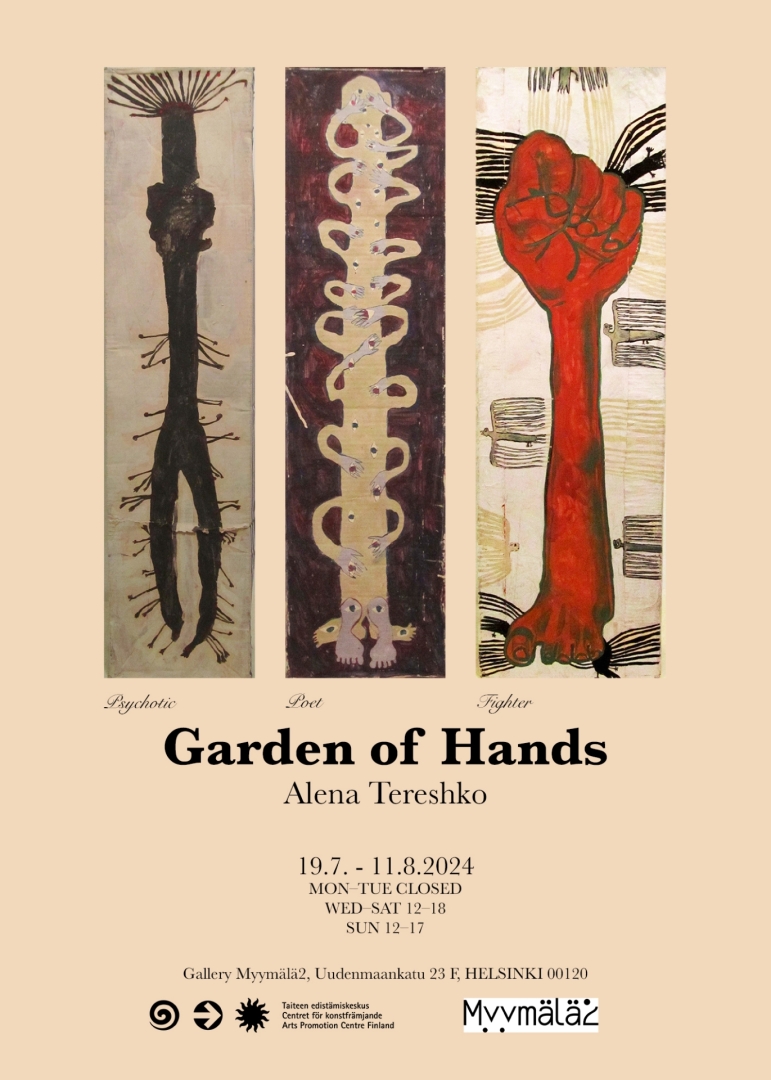This project grew from the series of paintings Tereshko made years ago. Back then, these characters were depicted in a manner resembling religious paintings or bestiaries. Reworked and revitalized for this show, they enter a certain dialogue with Tereshko’s ongoing project Kotiodysseia, dedicated to stuffed animals and childhood activities growing through the lives of adults. Moreover, the current project continues, with a certain playfulness, her investigation of the body and femininity.
The “petting garden” of soft sculptures invites the audience to play and manipulate it and find joy and relaxation. Tereshko mentions that the objects, because of their materiality and tactility, help to deal with hard emotions and could play a therapeutic role. For some, the need to hold, be embraced, touch, and squeeze soft matters becomes especially evident in living as an immigrant. In this sense, the function of such sculptures recalls the one of a transitional object. According to D. Winnicott, infants use such objects, usually toys or blankets, to cope with the split from their mothers and tolerate separation anxiety. These tangible entities support a softer transition to the external reality in front of which even grown-up individuals become very vulnerable in certain circumstances.
Following the psychoanalytic path, which the artist mentions as crucial for her work, it is easy to draw connections to the notions of the uncanny, that S. Freud developed concerning something both familiar and alien simultaneously, and of the abject, introduced by J. Kristeva, which refers to dangers that body contains, traumatic experience and its reenactment. However, slightly uncanny, and slightly abjectified, these characters are less related to fears and bodily anxiety but rather serve as tools for finding comfort. In a sense, they are grown-up stuffed toys with their own grown-up problems, not too different from us. Tereshko constructs her frivolous cabinet of curiosities with subtle humor and lots of empathy for human conditions and feelings.
Text: Adel Kim.
Artist bio:
Alena Tereshko (1986, Ishim, Tyumen region) studied at The Saint Petersburg Stieglitz State Academy of Art and Design. She works with performance art, video, painting and graphics.
Often, in artistic research she focuses on a body and its representations. Alena is particularly interested in how contemporary phenomena and tradition (folklore or traditional art) are intertwined in the arts. She intrigued by the relationship between images and perception. In general opposite categories and their points of contact fascinate her.
Alena Tereshko is the winner of the Sergey Kuryokhin Prize (2017) in “The Best Media Object” category. She had solo-exhibitions and participated in numerous exhibitions in Russia and Europe. Alena got scholarship residency in Cite des Arts (Paris, 2024), Garage studios (Moscow, 2023), Iaspis (Umeå, Sweden, 2019), Nordland Kulturesenter (Bodø, Norway, 2015).




